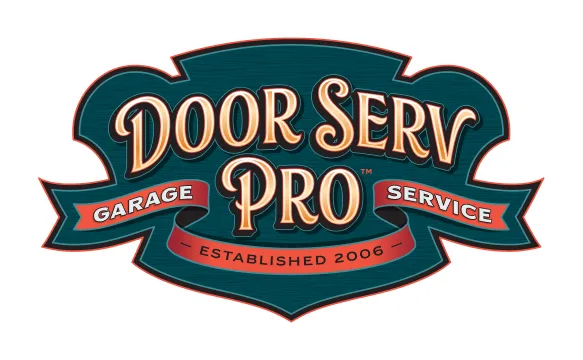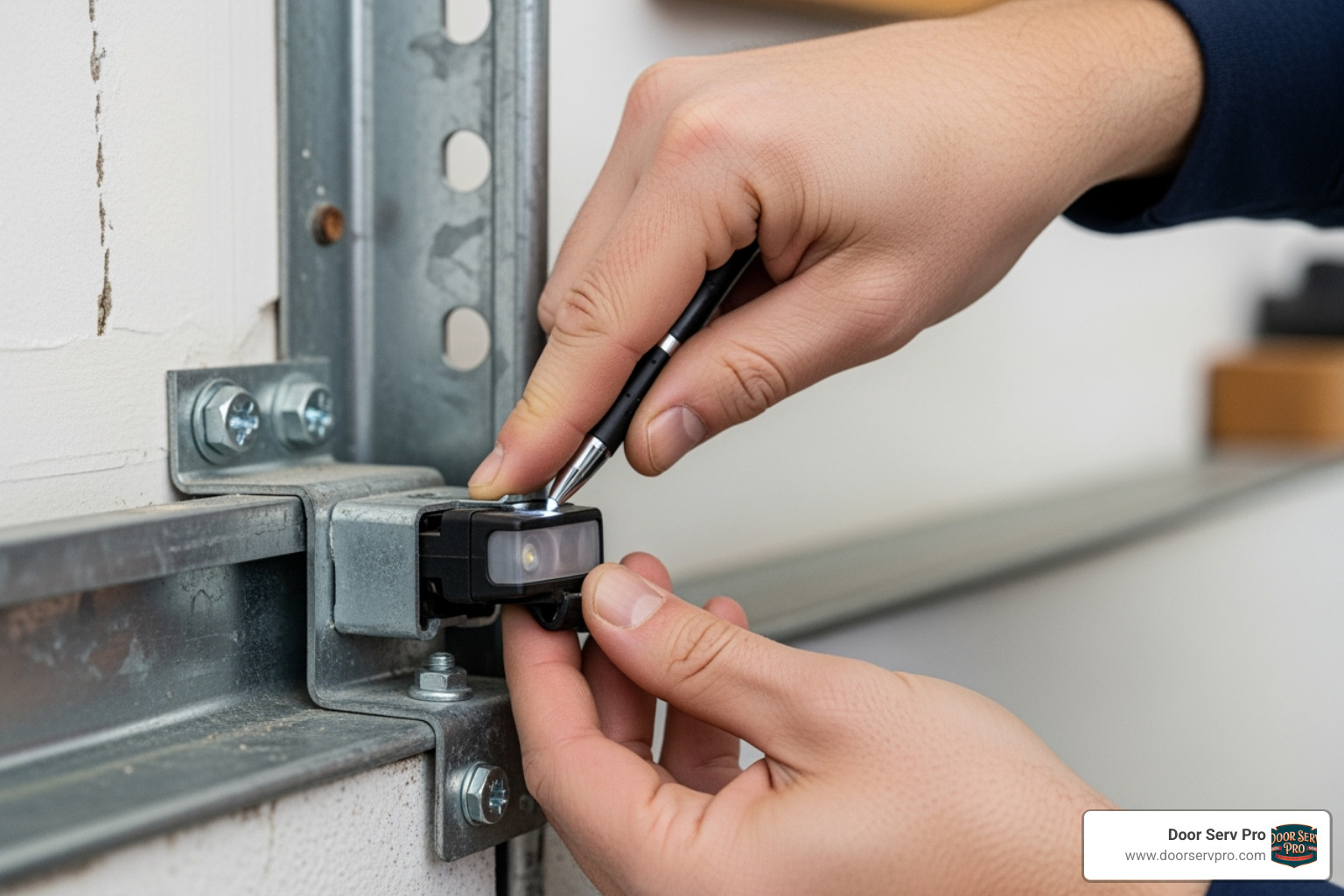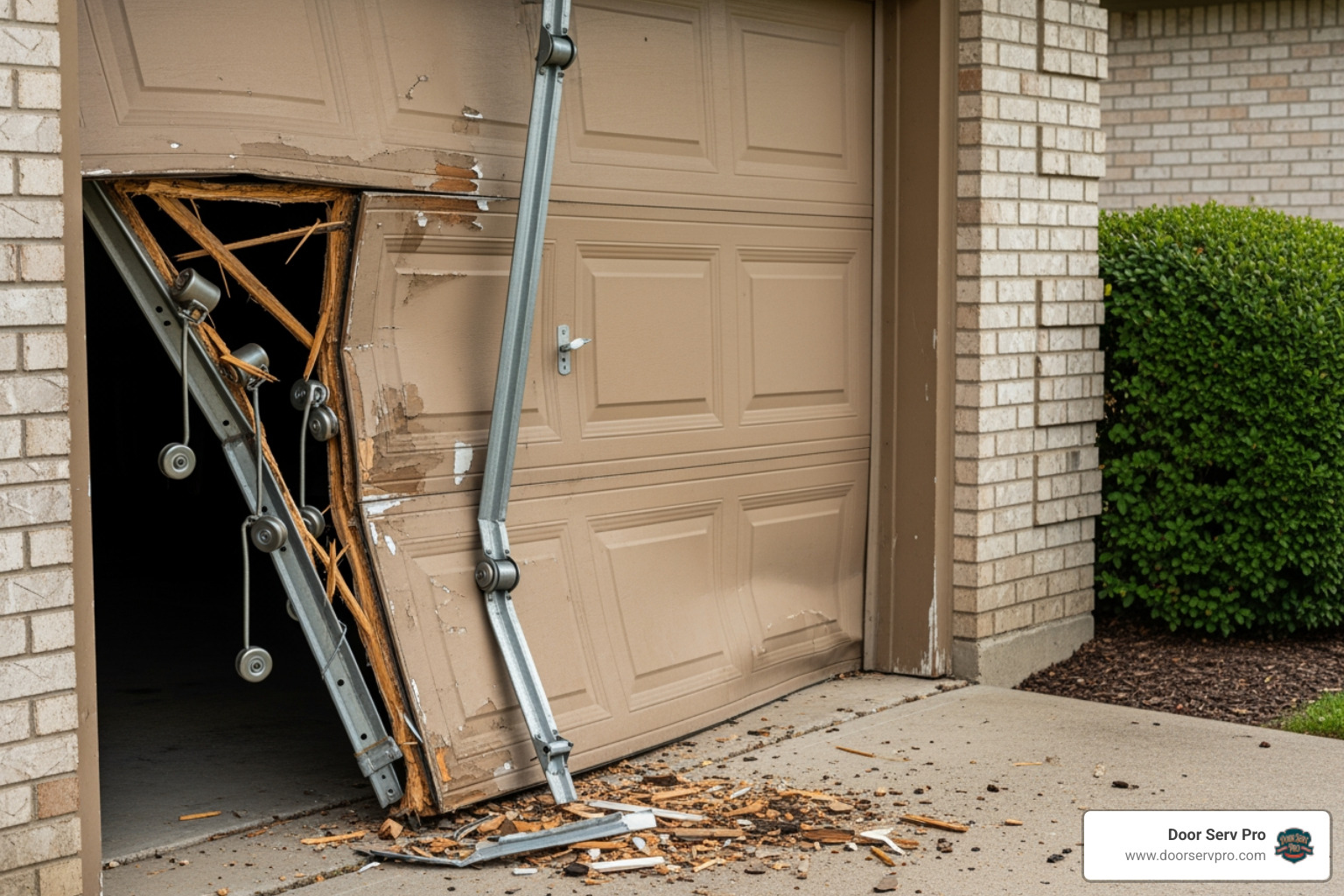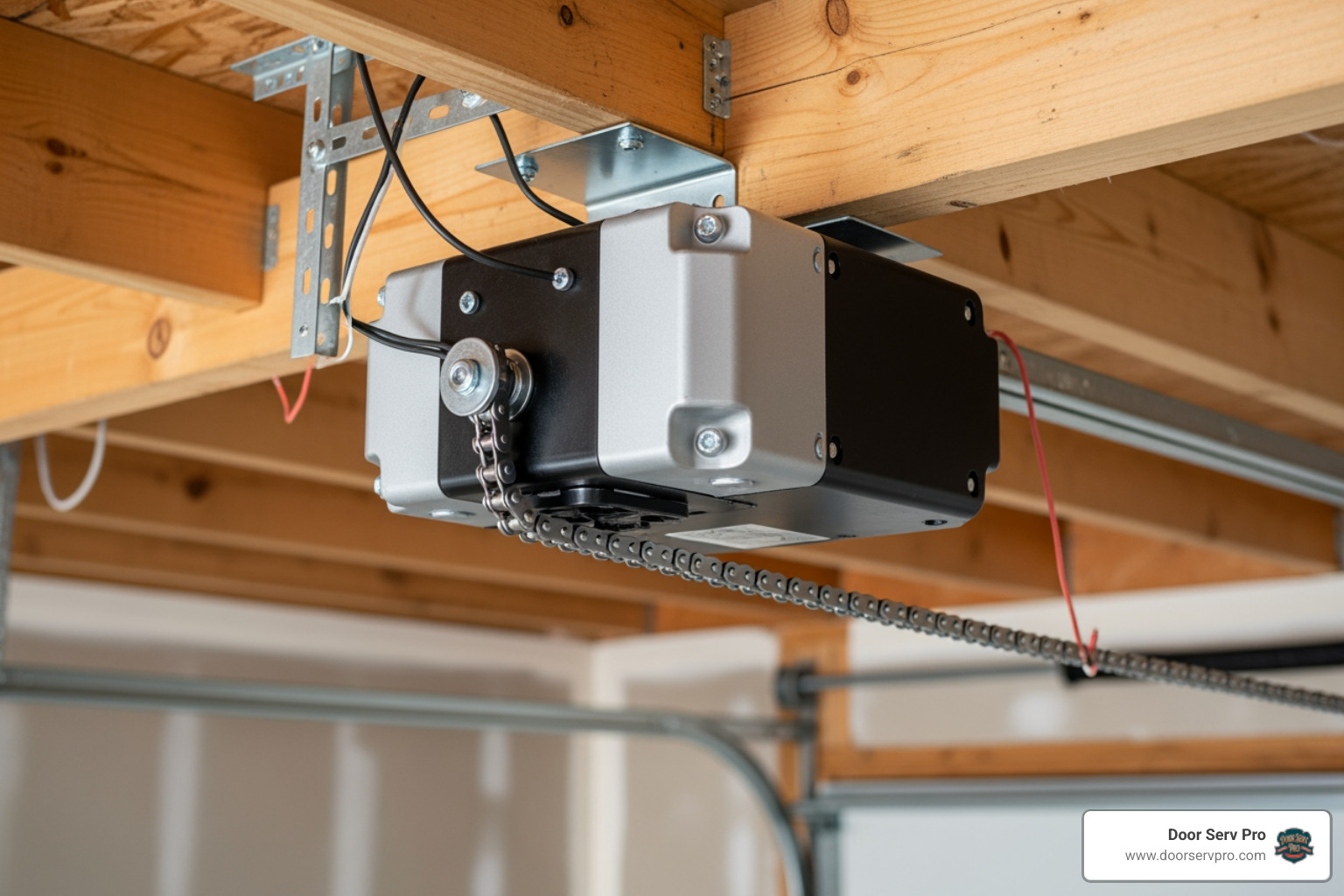Why Your Garage Door Safety Check Can't Wait
A garage door safety check is essential for protecting your family. As the largest moving object in your house, weighing hundreds of pounds and operating multiple times daily, a garage door can become dangerous without proper safety checks.
Quick garage door safety check essentials:
- Monthly photo eye sensor test - Block sensors with 6+ inch object, door should not close
- Auto-reverse feature test - Place 1.5-inch object in door path, door should reverse on contact
- Balance check - Disconnect opener, lift door halfway manually, should stay in place
- Visual inspection - Check springs, cables, rollers, and tracks for wear or damage
- Listen for unusual sounds - Grinding, scraping, or banging indicates potential problems
The statistics are sobering: an estimated 30,000 injuries occur annually due to garage doors. Many of these accidents happen because homeowners skip regular safety checks or don't know what to look for.
Modern garage doors built after 1993 include government-mandated safety features like photo eye sensors and auto-reverse mechanisms. But these safety systems only work if they're properly maintained and tested regularly.
This guide will walk you through a complete garage door safety inspection you can do yourself, plus help you recognize when it's time to call the professionals at Door Serv Pro.
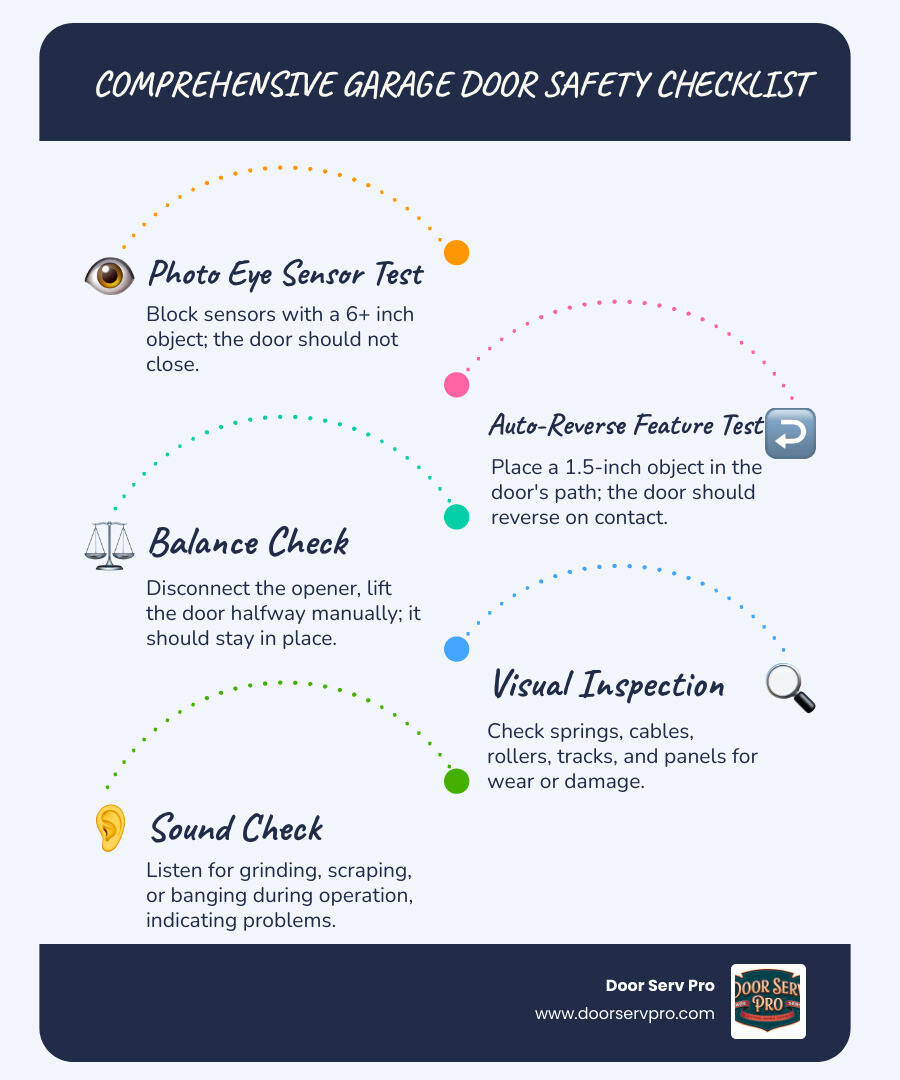
Why Regular Garage Door Safety Checks are Crucial
Regular garage door safety checks are crucial for preventing serious accidents and protecting your property. This maintenance ensures your door's safety features work correctly, much like a car check-up.
Preventing accidents is key. A small, unaddressed issue can escalate into a major malfunction, leading to costly repairs or injuries. For example, a worn spring can break and cause the door to crash down, endangering people and damaging property.
The importance of these checks is even enshrined in law. Government regulations, particularly those enforced by the U.S. Consumer Product Safety Commission (CPSC), have shaped modern garage door safety. In fact, following an advisory from the CPSC in 1983 due to a tragic incident, significant changes were mandated. Since the 1990s, the UL 325 standard has required all garage door openers to include essential safety features like photo eye sensors and auto-reverse mechanisms. This means any garage door opener manufactured and installed after 1993 must have these features. If your garage door system predates these regulations, it's particularly vital to consider upgrading for improved safety.
We recommend performing a basic garage door safety check at least once a month. This quick routine helps you catch potential issues early. Beyond your monthly DIY checks, it's also highly beneficial to schedule an annual professional inspection. A certified technician can spot subtle signs of wear and tear, adjust components, and perform maintenance that goes beyond what you can do yourself, ensuring your door operates safely and efficiently for years to come. The proactive approach is always the safest and most cost-effective one. For more insights on prompt repair, check out The Importance of Prompt Garage Door Repair to Ensure Home Safety.
The Visual Inspection: Your First Line of Defense
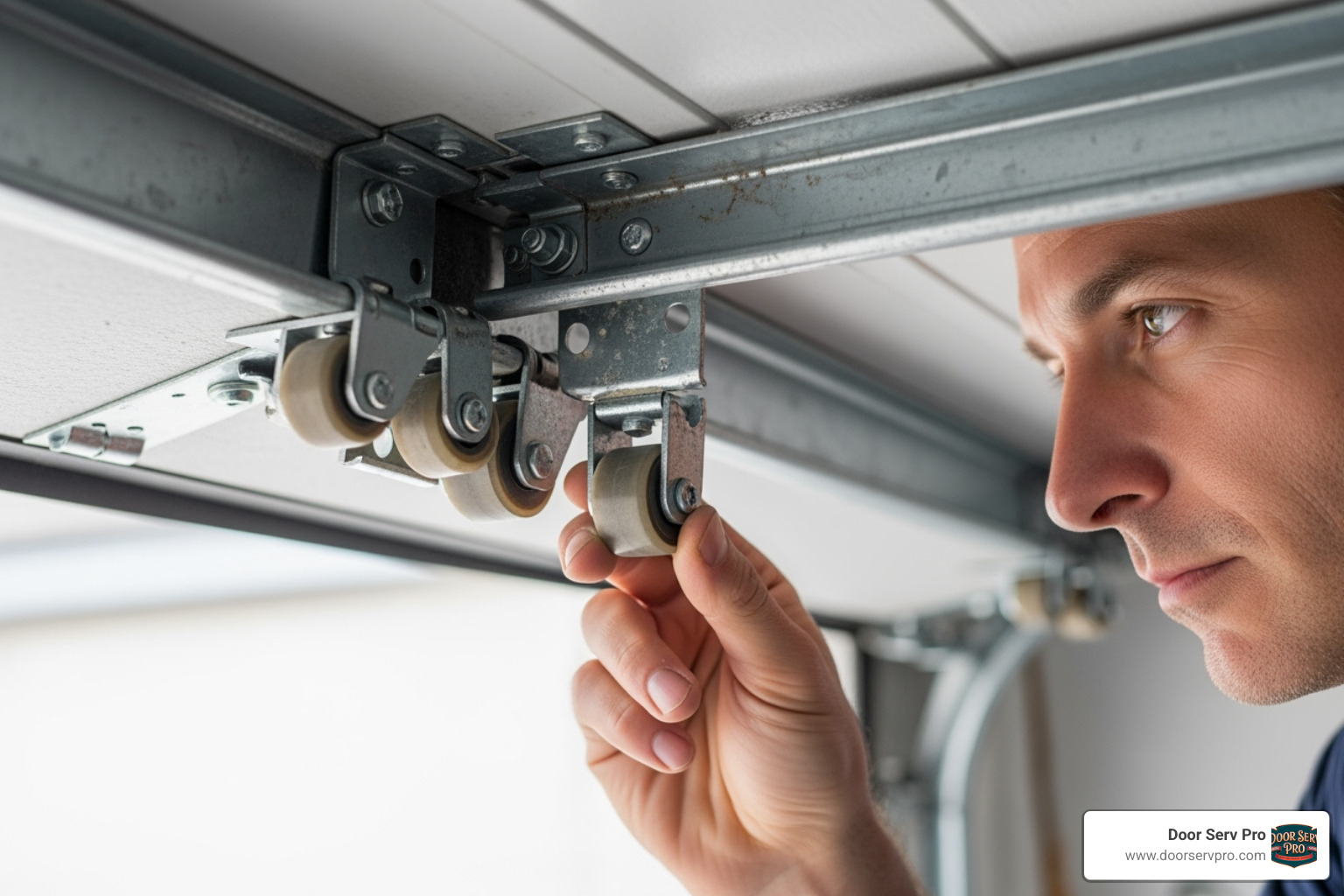
Before operating the door, perform a visual inspection. This is a critical first step in your garage door safety check. We recommend a detailed look twice a year, with a quick glance monthly.
Start by inspecting the hardware: springs, cables, rollers, pulleys, and hinges. Look for visible signs of wear and tear, such as rust, fraying, cracks, or loose parts.
- Springs: Check for sagging, gaps in the coils, or cracks, which can indicate a potential failure.
- Cables: Look for fraying, broken strands, or rust. Frayed cables are a serious hazard and require immediate professional attention.
- Rollers: Check for cracks, chips (nylon), or bending (steel). Worn rollers can cause the door to jerk or get stuck.
- Pulleys: If you have extension springs, inspect the pulleys for any wear, cracks, or damage.
- Hinges: Ensure hinges are secure and not bent, warped, or excessively worn.
- Tracks: Make sure tracks are clean, free of debris, and aligned. Bent tracks can cause the door to bind or derail.
- Door Panels: Inspect steel doors for corrosion and wooden doors for peeling or cracking.
Addressing these issues early can prevent more significant problems down the line. For more on preventive maintenance, read our guide on Preventive Maintenance: Key Steps to Avoid Costly Garage Door Repair.
The Sound Check: What Your Garage Door is Telling You
During your garage door safety check, listen to the sounds your door makes during operation. Unusual noises are often the first sign that something is wrong.
- Grinding noises: Can indicate misaligned tracks or worn rollers.
- Scraping sounds: May point to debris in the tracks or a rubbing component.
- Squeaking or squealing: Often means moving parts need lubrication to prevent premature wear.
- Popping or banging: A loud pop often signals a broken spring. This is a serious issue requiring immediate professional attention. Never operate a door with a broken spring.
If you hear any of these unusual sounds, don't ignore them. They are your garage door's way of telling you it needs attention. For more on keeping things quiet, check out The Importance of Lubrication in Regular Garage Door Maintenance.
Performing Your Monthly Garage Door Safety Check: 3 Essential Tests
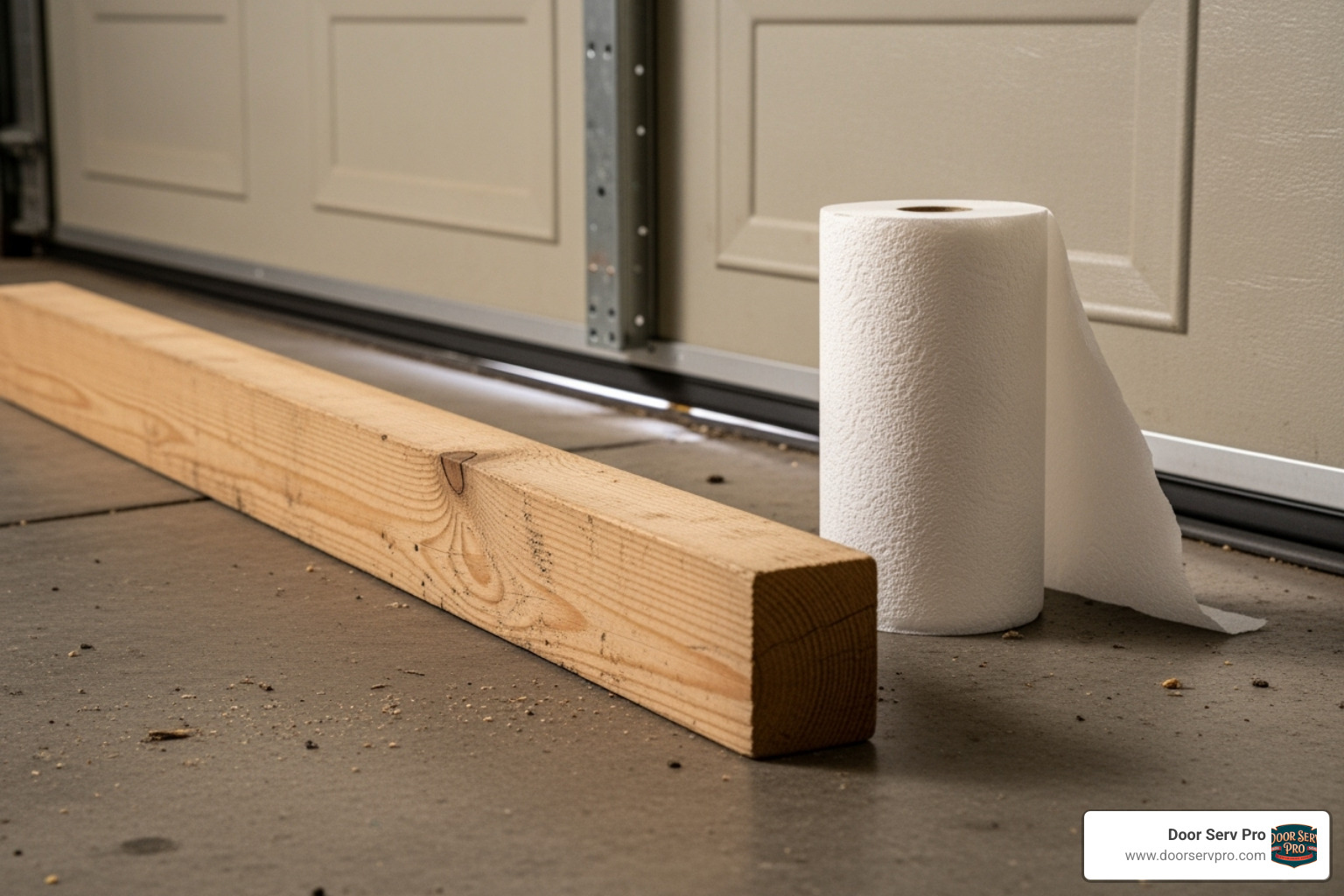
After your visual and sound checks, it's time for the hands-on portion of your garage door safety check. These three essential tests verify that your door's safety features are working correctly.
You only need a piece of 2x4 wood and a paper towel roll. These quick tests provide peace of mind and are vital for your family's safety.
Let's walk through each test step by step, so you can feel confident performing them safely.
Step 1: Test the Photo Eye Sensors
Photo eye sensors are small but vital devices mounted near the bottom of your garage door tracks. They create an invisible infrared beam, and if anything breaks that beam while the door is closing, it should immediately reverse.
These sensors are critical because they must be positioned no higher than 6 inches from the ground to detect small children and pets.
To test them, grab an object at least 6 inches tall (like a roll of paper towels) and place it directly in the path between the two sensors to block the beam.
Now, try closing the door with your remote or wall control. If working properly, the door should refuse to close or will immediately reverse. A blinking light on the opener unit also signals an obstruction.
If the door continues to close, try cleaning the sensor lenses with a soft cloth, as dust or webs can be the culprit. Then, test again.
If your door still fails this test, or if you notice the sensor lights aren't glowing steadily, it's time to call in the professionals. This isn't a "fix it later" situation – photo eye sensors are a critical safety feature that protects your family every single day. For detailed guidance on sensor maintenance, check out Garage Door Maintenance: Ensuring Safety and Functionality of Sensor.
Step 2: Test the Auto-Reverse Safety Feature
The auto-reverse safety feature is a backup system using contact detection. If the closing door physically bumps into an object, it should automatically reverse direction.
Required by law on openers made since 1991, this feature prevents the door from crushing objects that get past the photo eyes.
To test this, place a 2x4 or a paper towel roll flat on the ground in the door's path. The object should be 1.5 to 5 inches high to ensure solid contact.
Press the close button and watch. When the door makes contact with the object, it should immediately sense the resistance and reverse direction without applying significant pressure.
If your door fails this test – meaning it continues pressing down on the object or tries to power through the obstruction – you have a serious safety problem. The force settings on your opener might be incorrectly adjusted, or the reverse mechanism itself could be malfunctioning.
Here's what's crucial to understand: never attempt to adjust these force settings yourself. These adjustments require professional expertise and specialized tools. A door that won't reverse on contact poses a real danger to your family and property. For comprehensive information about garage door safety features, visit DASMA's safety tips, and learn more about professional repair benefits at The Benefits of Professional Garage Door Repair.
Step 3: Check the Door's Balance
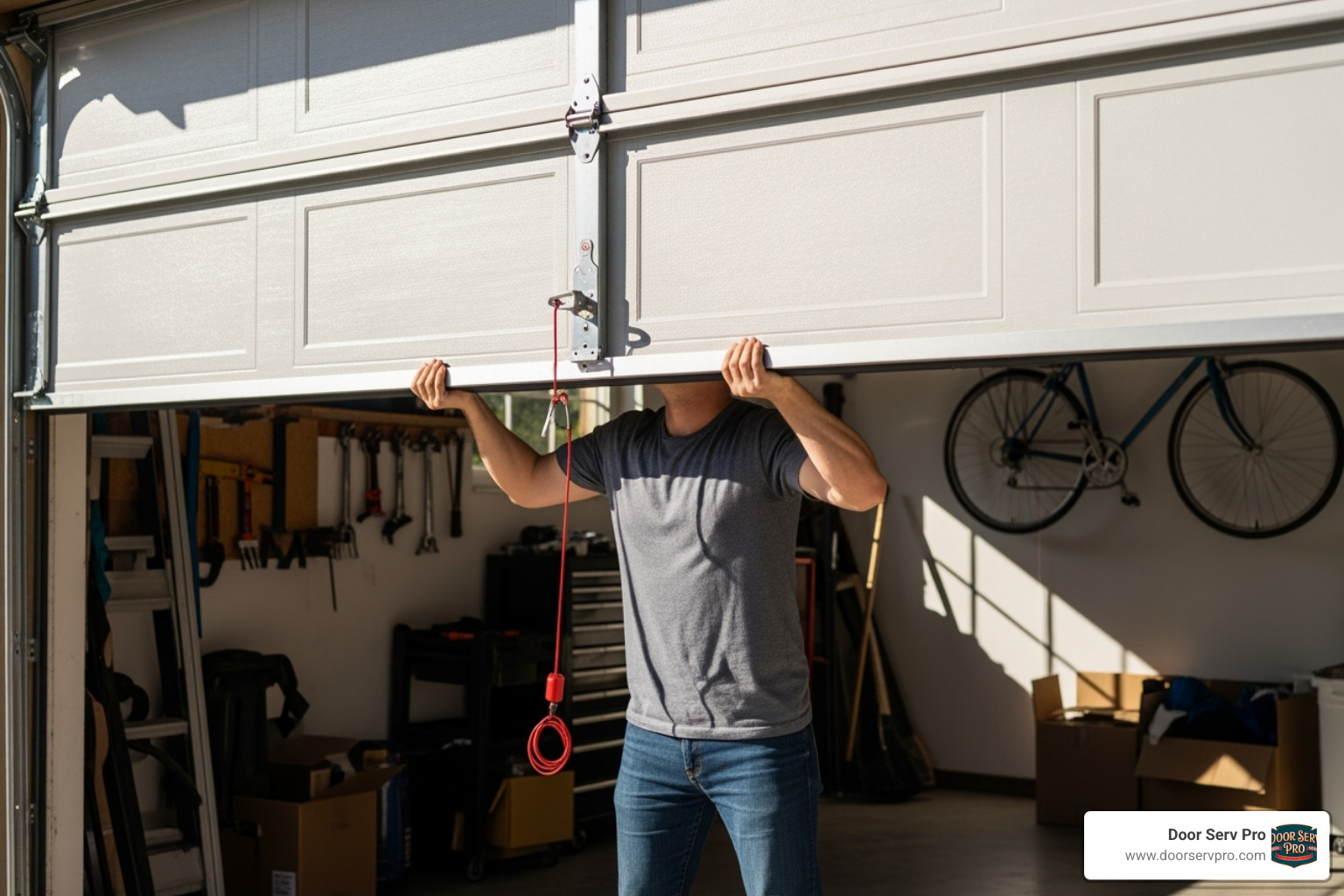
A balanced garage door operates smoothly, puts minimal strain on the opener, and is safer. An unbalanced door forces the opener to work overtime and can be dangerous.
This test evaluates if the garage door springs are correctly counterbalancing the door's weight, making the heavy door easy to lift.
Start with the door fully closed. Pull the red emergency release cord hanging from the opener's trolley to disengage the opener and operate the door manually.
Next, carefully lift the door by hand to about waist height (halfway open). It should feel light and move smoothly. Gently let go of the door.
A perfectly balanced door will stay put when you release it. It shouldn't fall or continue to rise.
But what if your door has other ideas? If the door crashes down when you let go, your springs are too weak or worn out – they're not providing enough lift to counterbalance the door's weight. If the door shoots upward when released, your springs might be wound too tightly.
Either scenario spells trouble. An unbalanced door forces your opener to work much harder than designed, leading to premature wear and potentially expensive repairs. More importantly, an unbalanced door can be dangerous to operate manually during power outages or emergencies.
If your door fails this balance test, avoid using your automatic opener until the problem is resolved. Continuing to operate an unbalanced door will only accelerate damage to your opener and other components. The solution almost always involves spring adjustment or replacement – work that requires professional expertise due to the extreme tension these springs maintain. Learn more about why this test matters at Why Balance Testing is a Crucial Part of Garage Door Maintenance.
Advanced Safety: When to Leave it to the Professionals
There's a fine line between being a handy homeowner and putting yourself in danger. While we absolutely encourage you to perform regular garage door safety checks, some aspects of garage door maintenance should never be DIY projects.
Think of it this way: you wouldn't perform surgery on yourself, right? The same principle applies to certain garage door components. These systems involve massive weights, high-tension springs, and complex mechanisms that can seriously injure you if handled incorrectly.
The key is recognizing when you've reached your limits as a homeowner. A wobbly roller? That's something you can spot during your monthly inspection. A frayed cable under extreme tension? That's when you step back and call the professionals.
Our team at Door Serv Pro has seen too many well-intentioned homeowners turn a simple fix into a dangerous situation. With over 25 years of experience, we know exactly which components require professional expertise and specialized tools.
The Dangers of Springs and Cables
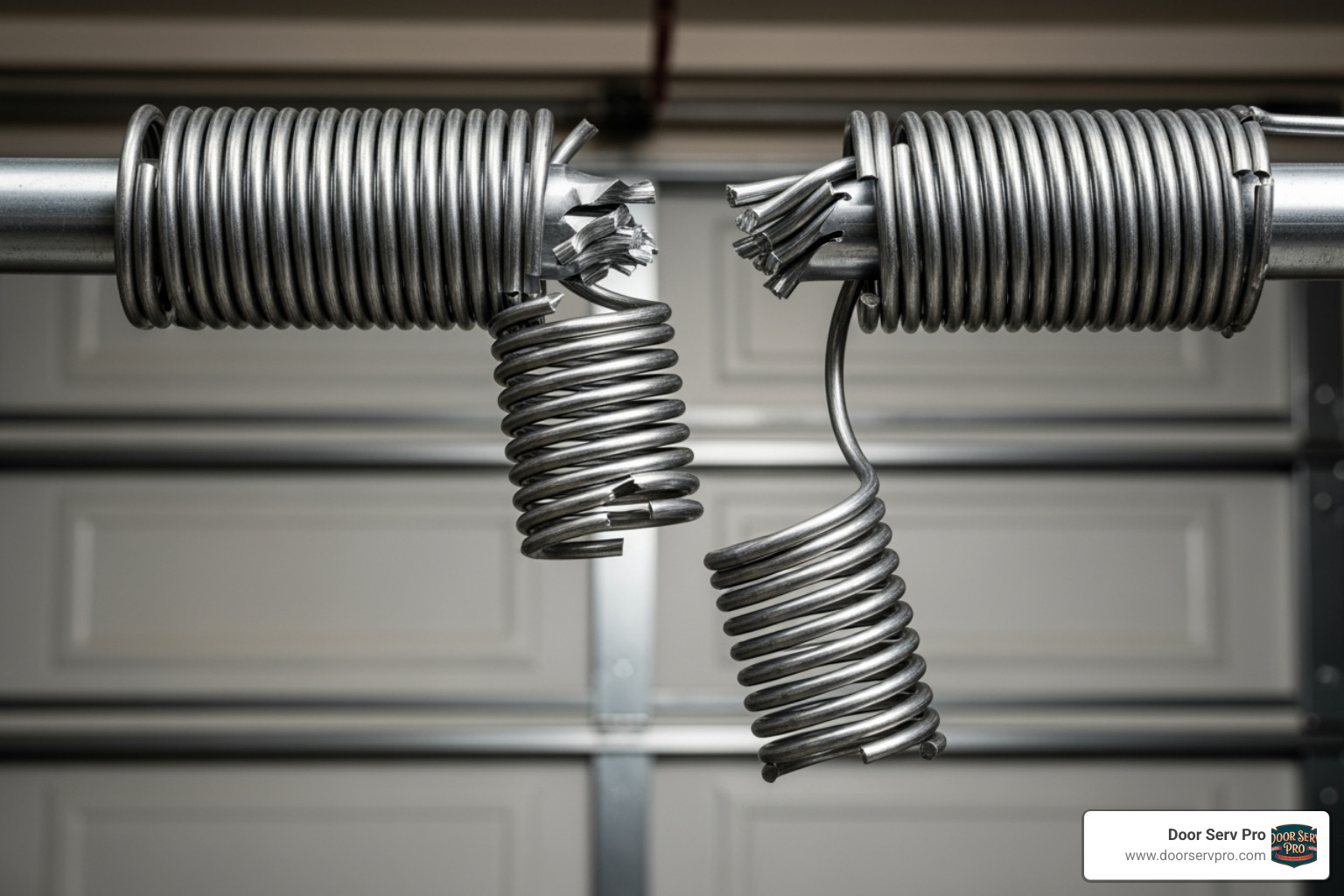
Here's where we get serious for a moment. Garage door springs and cables are not DIY territory – ever. We can't emphasize this enough because these components can literally be life-threatening if mishandled.
Whether you have torsion springs mounted above your door or extension springs running along the tracks, both types store enormous amounts of energy. They're designed to counterbalance doors that can weigh 300 pounds or more. When that energy releases unexpectedly, the results can be catastrophic.
The dangers are very real. A snapping spring can cause severe lacerations, broken bones, or even death. We've seen springs shoot across garages with enough force to dent car hoods and punch holes in drywall. The sudden release of tension can send metal parts flying like projectiles.
Frayed cables present similar risks because they work directly with the spring system. When cables fail, the door can come crashing down without warning, potentially crushing anything – or anyone – underneath.
Even if you spot these problems during your visual inspection, resist any urge to tinker with them. Simply identifying the issue and calling for professional help is the smart move. Our NATE-certified technicians have the proper tools, training, and experience to handle these high-tension components safely.
Your family's safety is worth far more than the cost of professional repair. For detailed information on this critical topic, check out our guide on Safe Garage Door Spring Repair.
A Guide to Child Safety and Your Garage Door
Kids are naturally curious, and garage doors can seem like fascinating giant toys to them. Unfortunately, this curiosity can lead to serious accidents if we don't take proper precautions during our garage door safety check routine.
The statistics are sobering: the Consumer Product Safety Commission reports that garage doors injure thousands of children each year. Many of these accidents are completely preventable with the right safety measures.
Wall control buttons should always be mounted at least 5 feet high – well out of reach of small hands. This isn't just a suggestion; it's a crucial safety requirement that prevents children from accidentally operating the door.
Remote controls need the same treatment you'd give car keys or other potentially dangerous items. Store them where children can't access them, and make it clear that these devices are not toys. Even garage door remotes that look like toys can cause serious harm in the wrong hands.
Education is just as important as physical barriers. Teach your children that garage doors are powerful machines with pinch points where fingers can get caught. The areas where door panels meet and where the door enters the tracks are particularly dangerous.
One rule we always stress: never race the door. Kids love to try sliding under closing garage doors, but even with safety sensors, this is incredibly dangerous. A sensor could malfunction, or a child could trip and fall in the door's path.
The CPSC official advisory provides additional guidance on keeping children safe around garage doors. Taking these precautions seriously helps ensure your garage remains a safe space for the whole family.
Frequently Asked Questions about Garage Door Safety
You're not alone if you have questions about keeping your garage door safe – we hear these same concerns from homeowners every day. After 25 years in the business, our team at Door Serv Pro has learned that the best safety comes from understanding your garage door system inside and out.
Let's tackle the most common questions we get about garage door safety checks and what they really mean for your family's protection.
How often should I perform a full garage door safety check?
Think of garage door maintenance like brushing your teeth – consistency beats intensity every time. We recommend a layered approach that catches problems before they become dangerous.
Monthly DIY checks should be your bread and butter. Set aside 15 minutes each month to run through your visual inspection, sound check, and the three essential safety tests we covered earlier. Many of our customers find it helpful to tie this to another monthly routine, like paying bills or changing air filters.
The real game-changer is scheduling an annual professional inspection with our NATE-certified technicians. While you can spot obvious problems, we're trained to catch the subtle signs of wear that could spell trouble down the road. We can also perform maintenance tasks that require special tools or expertise, like adjusting force settings or lubricating hard-to-reach components.
Don't forget about seasonal changes either. Maryland winters can be tough on garage door springs, and summer heat affects metal components differently. A quick check when the seasons change helps ensure your door adapts well to temperature swings.
What are the most important safety features on a modern garage door?
If your garage door was installed after 1993, you've got some serious safety technology working behind the scenes. These features aren't just nice-to-haves – they're your family's first line of defense.
The auto-reverse mechanism is your garage door's most critical safety feature. When working properly, it stops the door from crushing anything in its path by immediately reversing direction upon contact. This mechanical backup works even if other systems fail.
Photo eye sensors act like invisible security guards, creating an infrared beam across your garage opening. Break that beam while the door is closing, and it instantly reverses. These sensors must be mounted no higher than six inches off the ground – that's roughly the height of a crawling toddler.
Your manual emergency release – that red cord hanging from the opener – gives you control when everything else fails. Whether it's a power outage or a malfunction, this cord disconnects the door from the opener so you can operate it manually. Every family member should know where it is and how to use it.
The force settings on your opener determine how much pressure the door applies before giving up and reversing. These settings require professional calibration – too light and your door won't close properly, too heavy and it won't reverse when it should.
Can a passed safety test provide a false sense of security?
This is one of the smartest questions we get, and the honest answer is yes – but that doesn't mean you should skip testing.
A garage door safety check is like a snapshot of your system at one specific moment. Your springs might be perfectly balanced today but fail next week. Photo eye sensors can get knocked out of alignment by a basketball or accumulate enough dust to stop working properly.
Components can fail between checks, sometimes without warning. We've seen springs break on doors that passed every test just days before. Weather, regular wear, and even manufacturing defects can cause sudden failures that no test could predict.
Here's what we tell our customers: passing a test isn't a guarantee, but it's still your best defense. Think of it like wearing a seatbelt – it doesn't prevent every accident, but it dramatically improves your odds of staying safe.
The key is building a habit of vigilance rather than checking a box and forgetting about it. Regular monthly checks combined with annual professional maintenance create multiple safety nets. When one fails, the others are there to catch potential problems.
That's why we emphasize the importance of both DIY awareness and professional expertise. Your monthly attention plus our trained eyes give your family the most comprehensive protection possible.
Your Partner in Home Safety
Congratulations! You've just learned how to perform a comprehensive garage door safety check that can protect your family and save you from costly repairs down the road. It's amazing how a few simple tests each month can make such a big difference in your home's safety.
Let's recap what we've covered: the visual inspection helps you spot trouble before it becomes dangerous, while the auditory check lets your garage door tell you what's wrong. The three essential monthly tests – testing your photo eye sensors, checking the auto-reverse mechanism, and performing the balance test – form the backbone of your safety routine.
But here's the thing: we know that empowering you with this knowledge is only half the battle. The other half is recognizing when it's time to step back and let the professionals handle things. Those high-tension springs and cables aren't just intimidating – they're genuinely dangerous. There's no shame in calling for help when safety is on the line.
At Door Serv Pro, we've been helping families in West Virginia, Virginia, Pennsylvania, and Maryland keep their garage doors safe and reliable for over 25 years. Our NATE-certified team has seen it all, from simple sensor adjustments to complex spring replacements. We're not just technicians – we're your neighbors who understand that your garage door isn't just a convenience, it's part of keeping your family safe.
Whether you've finded an issue during your monthly safety check or you simply want the peace of mind that comes with a professional inspection, we're here to help. Our founder Paul Wiese built this company on the belief that every home deserves expert care, and that tradition continues with every service call we make.
Ready to ensure your garage door is operating at its safest? Schedule your garage door service in Hagerstown, MD today and let our experienced team give you the confidence that comes with knowing your garage door is in expert hands.
